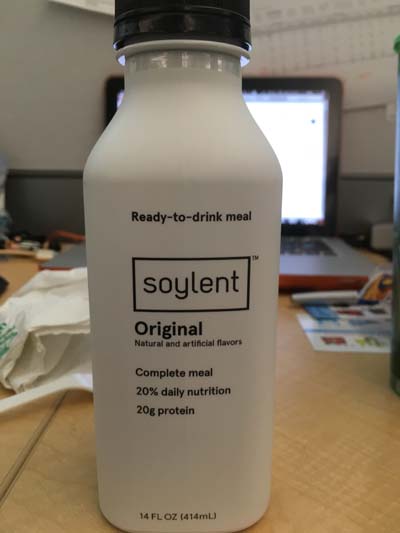
This “food substitute” has gotten the most attention…in the circles (or bubble if you believe such nonsense) of news I follow, mainly stuff influenced by the Economist, The Nation and scientifically-slanted podcasts. Soylent was also written about by the token tech writer for the New York Times and covered by The Atlantic. Since it was created by a software engineer, I figured he created it to get through long days of working on code. The name may be a demonstration of his humor but I think it’s a marketing failure. Everybody knows the reveal in Soylent Green and its implications of cannibalism isn’t funny.
By itself, it’s worse than Slimfast®. It tastes like the glue on the back of wallpaper from old-timey movies (at 42 seconds in, you’ll see my point).
- Add one bottle to fruit smoothie: it goes down more easily but the Soylent taste keep poking through the strawberries and banana, like an off-vanilla flavor. Not a bad way to make it more tolerable though. Hard to believe it’s thicker than smoothie material.
- Add one bottle to a can of Starbucks (the DoubleShot Energy): the caffeine boost helps but much like the smoothie material, Soylent’s aftertaste pokes through at the end. Maybe it’s “heavier” than the other mixers. Makes an excellent breakfast to keep me less hungry by my usual lunch time.
I went with a case (a dozen 14 oz. bottles) of the original flavor which costs $34, about $2.83/bottle. Mixing it with Starbucks/Monster makes it run under five bucks a meal, the fruit smoothie material puts Soylent per meal a little under. Would I keep drinking it? Let’s see how another competitor fares.
Next up, Huel, pronounced like “fuel.”
